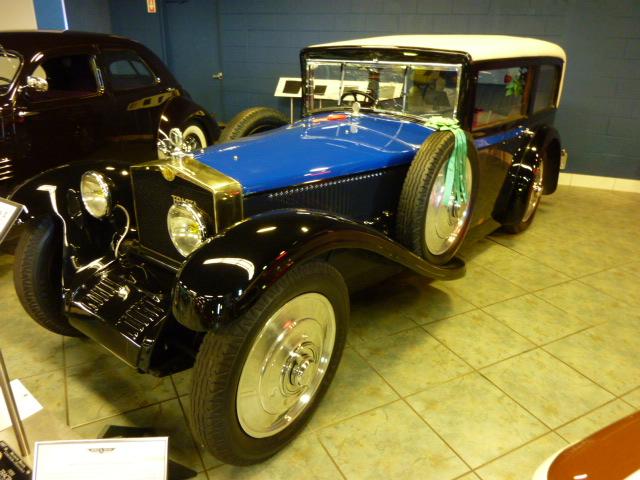Front-wheel-drive eliminated the driveshaft. With that factor removed, height could be reduced a little. But what if a car didn't have to be able to drive on unimproved roads? By the late 20s in much of America and western Europe, most roads between towns (if not between villages) were graded and paved in some manner. So clearance could be reduced for luxury or semi-luxury cars that were unlikely to ever be driven on poor roads. And perhaps seat height and overhead space for hats might be shortened a bit too.
The result was a number of low-slung, sporty cars appearing around 1930, none of which was very successful in the Great Depression market. Sales success came later via the traction-avant Citroën.
An early front-wheel-drive car from France was the Tracta (1926-1934), few of which were built. Tractas are perhaps best-known today (and the brand remains obscure) because the company was led by Jean-Albert Grégoire (1899-1992), legendary engineer of innovative automobiles.
Tracta in some respects was a racing car company that also built some passenger cars. Those passenger cars were low and sporty, though their styling was in the same vein as some contemporary American front-wheel-drive brands.
Two photos of a 1930 Tracta Type E that I took a few years ago at the fascinating Tampa Bay Automobile Museum which also has a 1929 Tracta Type A in its collection.
The following two images show contemporary American front-wheel-drive sedans.
In the foreground is a low-height, running board - free 1929 Ruxton. This photo offers a comparison to a standard American sedan, likely a 1928 Cadillac.
A 1929 Cord L29. Also low to the ground, but it retains running boards that were standard practice in those days.
This image was taken from the publication Touts les voitures françaises 1982 that contains a section dealing with 1932 French cars. These sporty Tractas are low, but include running boards. Click to enlarge.





No comments:
Post a Comment